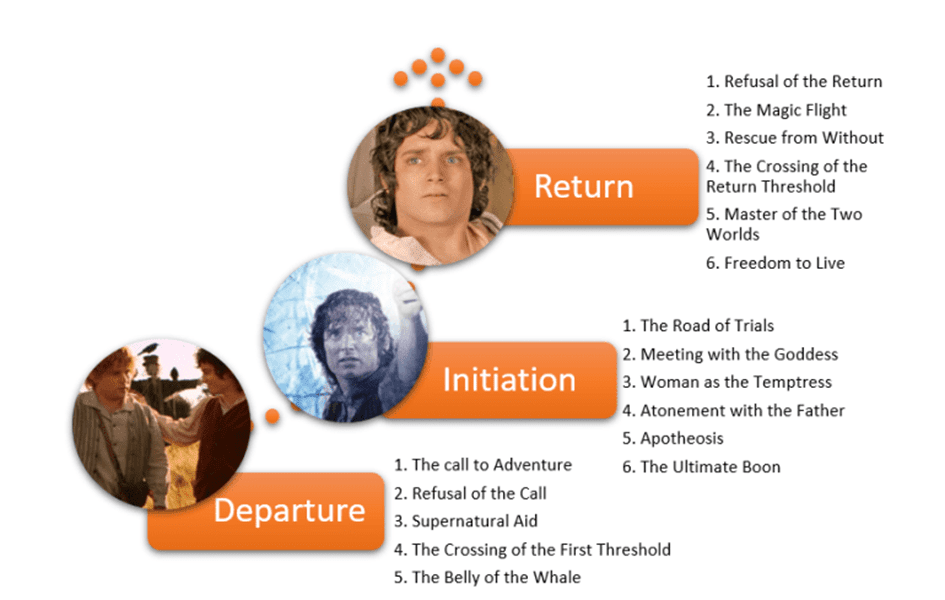Table of Contents
Introduction
Carl Jung’s idea of the Archetypes is often considered to be complicated and difficult to explain. At the same time, however, it is an extremely interesting idea and, understanding what Carl Jung meant by the archetypes can be beneficial to the understanding of one’s own conscious and unconscious personality.
In this article Carl Jung’s idea of the archetypes will be introduced and analysed. First a definition of the archetypes will be provided. Subsequently different ‘levels’ of archetypes are discussed, followed by an analysis of the potential (temporary) disappearance of archetypes. In the end an example of an archetype is discussed as well
Carl Jung has written extensively about the archetypes. For this present discussion Carl Jung’s book The Archetypes of the Collective Unconscious has been used.
What are the Archetypes?
Carl Jung developed the idea of the archetypes throughout his life. This development began with Jung’s analysis of his own unconscious personality in the Black Books and the Red Book, from which, as Jung himself indicated, all his important ideas emerged: “All my works, all my creative activity, has come from those initial fantasies and dreams which began in 1912.” (Seven Sermons to the Dead, p. 192)
Fundamentally, while actively evoking fantasies and dreams, Jung discovered that his unconscious was filled with multiple figures. Since Carl Jung had a deep knowledge of ancient myths, cultures and symbols, Jung discovered that there existed several similarities between the figures and fantasies which inhabited Jung’s own unconscious and the figures and fantasies of represented in the myths and symbols of our ancient ancestors.
As such, Jung arrived at the conclusion that certain parts of our unconscious are collective, meaning that they already exist when an individual is born and that they share strong communalities with the unconscious of other individuals in the past, present, and future. At the same time, although they might be represented in different ways, they are also similar across cultures and religions: “In contrast to the personal psyche, it [the collective unconscious] has contents and modes of behaviour that are more or less the same everywhere and in all individuals. It is, in other words, identical in all men and thus constitutes a common psychic substrate of a suprapersonal nature which is present in every one of us.” (The Archetypes of the Collective Unconscious, p. 4)
These commonalties existing within the unconscious of everyone, are what Jung defined as the archetypes of the collective unconscious: “Psychic existence can be recognized only by the presence of contents that are capable of consciousness […] the contents of the collective unconscious […] are known as archetypes.” (Ibid)
Different Archetypes: Personal, Modified & Dogmatic
Jung observed that the archetypes of the collective unconscious can manifest themselves in distinct forms. On the one hand there exist archetypes which have, in a way, been more developed and have in this sense become a part of the conscious characteristics of a culture. They are, for instance, expressed in myths, fairy tales and traditions: “Primitive tribal lire is concernced with archetypes that have been modified in a special way. They are no longer contents of the unconscious, but have already been changed into conscious formulae taught according to tradition” (Ibid, p.5)
On the other hand, there exist archetypes which have a more personal nature and are more influenced by the nature of an individual’s private personality; they have not been ‘modified’ by a culture: “Their immediate manifestation, as we encounter it in dreams and visions, is much more individual, less understandable, and more naïve than in myths, for example. The archetype is essentially an unconscious content that is altered by becoming conscious and by being perceived, and it takes its colour from the individual consciousness in which it happens to appear.” (Ibid)
As Jung observed as well, the archetypes present within cultures, fairy tales, myths, etc… are easier to define than the archetypes present within an individual’s dreams and fantasies: “What the word “archetype” means in the nominal sense is clear enough, then, from its relations with myth, esoteric teaching, and fairytale. But if we try to establish what an archetype is psychologically, the matter becomes more complicated.” (Ibid)
I believe that this difference can be illustrated by the figure below. On the left side we have the personal archetypes, which differ for each individual; although the dreams and fantasies represented by these kinds of archetypes may have their origin within the collective unconscious, the personality of the individual influences the representation of these archetypes (Dreams & fantasies).

In the middle we have the ‘modified’ cultural archetypes. I believe that it is possible to argue that these archetypes originated from many individuals of a community having similar personal archetypes. These similar personal archetypes may result in the development of myths and symbols, for instance. As a result, they are no longer a part of the unconscious world, but have been made conscious.
In case this development continues, it is possible that the modified cultural archetypes develop into ‘dogmatic’ archetypes, such as a religion. In this case, the archetypes have become conscious to such a degree that it is not often observed that these archetypes developed from the personal unconscious. Jung observed this as well in relation to the Catholic religion: “Dogma takes the place of the collective unconscious by formulating its contents on a grand scale. The Catholic way of life is completely unaware of psychological problems in this sense. Almost the entire life of the collective unconscious has been channelled into the dogmatic archetypal ideas and flows along like a well-controlled stream in the symbolism of creed and ritual.” (Ibid, p.12)
Then end of an Archetype
Interestingly, however, as Jung observed as well, in case the archetypes have become too conscious, they might end up losing their meaning all together. As Jung indicated, archetypical symbols are extremely meaningful; meaningful to such an extend that no one even considers questioning their meaning (Easter eggs, the tooth ferry, etc…): “The fact is that archetypal images are so packed with meaning in themselves that people never think of asking what they really do mean.” (Ibid, p.13)
However, as soon as man starts to question the meaning of archetypes, it is possible that ‘gods die’ according to Jung: “That the gods die from time to time is due to man’s sudden discovery that they do not mean anything, that they are made by human hands, useless idols of wood and stone.” (Ibid) According to Jung, if this happens, reason is the culprit: “He has merely discovered that up till then he has never thought about his images at all. And when he starts thinking about them, he does so with the help of what he calls “reason” – which in point of fact is nothing more than the sum total of all his prejudices and myopic views.” (Ibid) Jung uses the Protestant revolution as an example; all the images and icons were destroyed because of their ‘uselessness’ from a perspective based on reason.
As a result, we return to the circle on the left, were the archetypes, especially in the West, are once again mostly personal and unconscious. Jung indicated, however, that individuals often still seek meaningful images and symbols, which might explain the interest in Eastern religion, for example: “The Protestant is cast out into a state of defencelessness that might well make the natural man shudder. His enlightened consciousness, of course, refuses to take cognizance of this fact, and is quietely looking elsewhere for what has been lost in Europe. We seek the effective images, the thought-forms that satisfy the restlessness of heart and mind, and we find the treasures of the East.” (Ibid)
Example of an Archetype
Now that we have discussed what an archetype is, how they evolve and how they can eventually become meaningless through reason, it is interesting to discuss an example of an archetype as well. For this purpose, I have selected one of the most interesting archetypes: the hero archetype.
In order to illustrate the archetype of the hero I believe it is extremely useful to turn to the works of Joseph Campbell (You can read more about Joseph Campbell here: Josephy Campbell – the Monomyth). Fundamentally, Josepeh Campbell has successfully build on Carl Jung’s idea of the archetypes, most notably through his analyses of the hero archetype. Like Jung, Campbell noticed that throughout every hero myth, the hero follows a similar pattern: departure, initiation and return: “A hero ventures forth from the world of common day into a region of supernatural wonder: fabulous forces are there encountered and a decisive victory is won: the hero comes back from this mysterious adventure with the power to bestow boons on his fellow man.” (The Hero with a Thousand Faces, p.23)
In this way, the journey of the hero is not just a personal journey, but a universal one. Every individual can relate to the journey of the hero and does usually not question the existence of heroes. At the same time, the journey of the archetypal hero is, as indicated by Joseph campbell, similar across cultures. Heroes in movies go through similar journeys as heroes in ancient fairy tales. Below you can see the example of the hero from the Lord of the Ring’s movies; Frodo.


